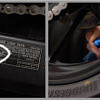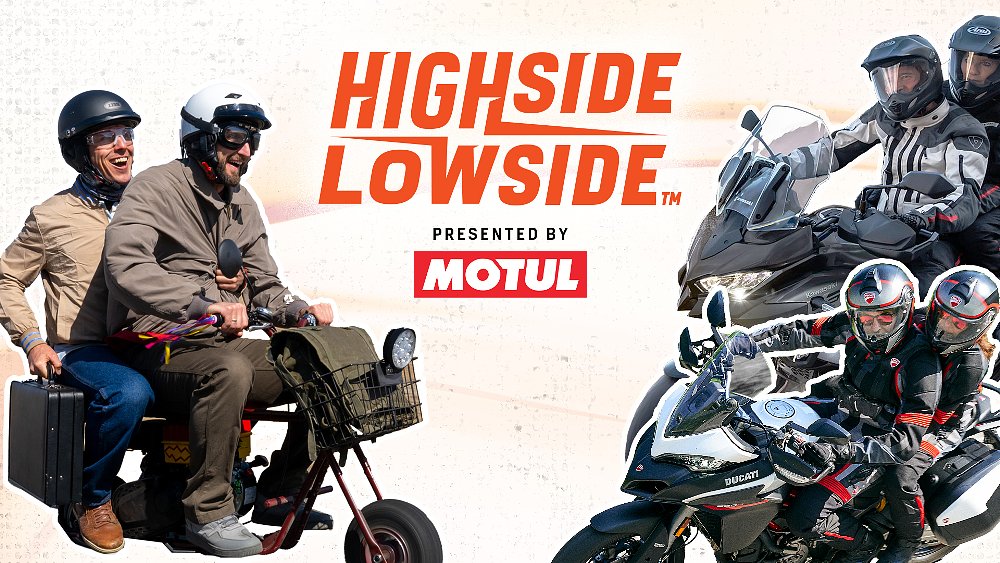You might even want to pump up your tires more than what you’d use while riding solo. Your owner’s manual or the sticker on your swingarm or under the seat will usually list the recommended PSI for two-up riding, and it tends to be several pounds higher than for solo riding. That extra pressure helps keep the tires from deforming under the added weight of a passenger, which is important for maintaining the tires’ shape and preserving handling.
Another thing that will help preserve handling is adjusting your suspension, specifically your rear spring preload. Adding a passenger’s weight to your motorcycle will cause the rear to squat, sometimes enough to throw off the geometry so much that the steering feels heavy and slow.
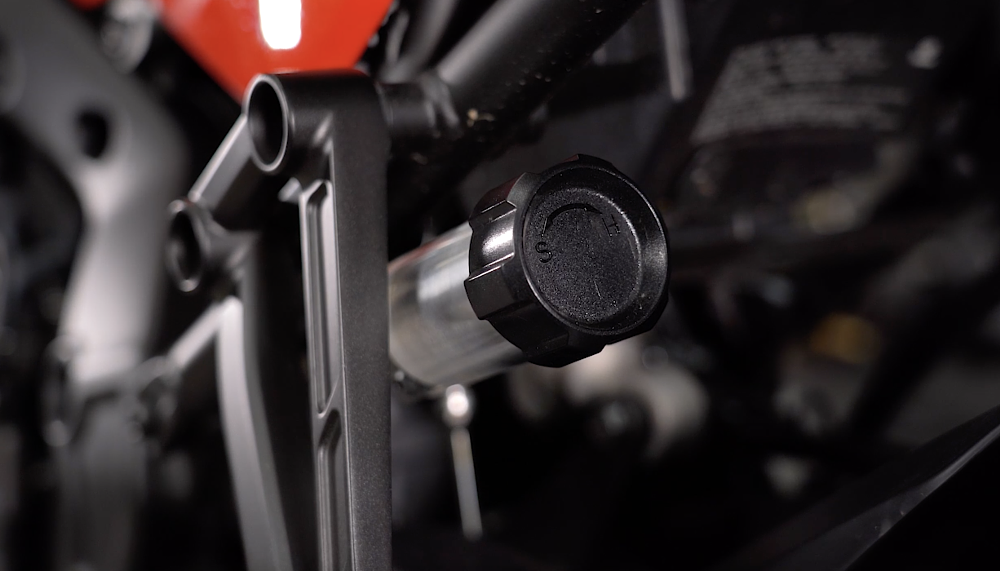
Spinning in some rear spring preload will help maintain ride height, cornering clearance, and steering behavior. If you’re lucky, your bike will have a hydraulic preload adjuster or maybe even electronically adjustable suspension, so adding preload is quick and easy. Other bikes may require using a spanner to turn the preload collar. In that case it’s going to be a bigger hassle, and while it’s not absolutely necessary to do, it definitely helps keep your bike handling the way you’re used to instead of suddenly feeling like a chopper.
Now, obviously, before your passenger even gets on the bike, they’ve got to be wearing appropriate riding gear. A helmet and jacket, along with gloves, jeans, and decent shoes, are a must, and it’s up to you to help them understand how important proper protective equipment is. Also, as experienced riders we’re used to getting hot in the sun or in traffic, or feeling chilly when it’s cold out, but folks who have only ever traveled by car probably aren’t prepared for that. So pick a day with decent weather, and make sure they’re in gear that’ll help keep them comfortable and safe.
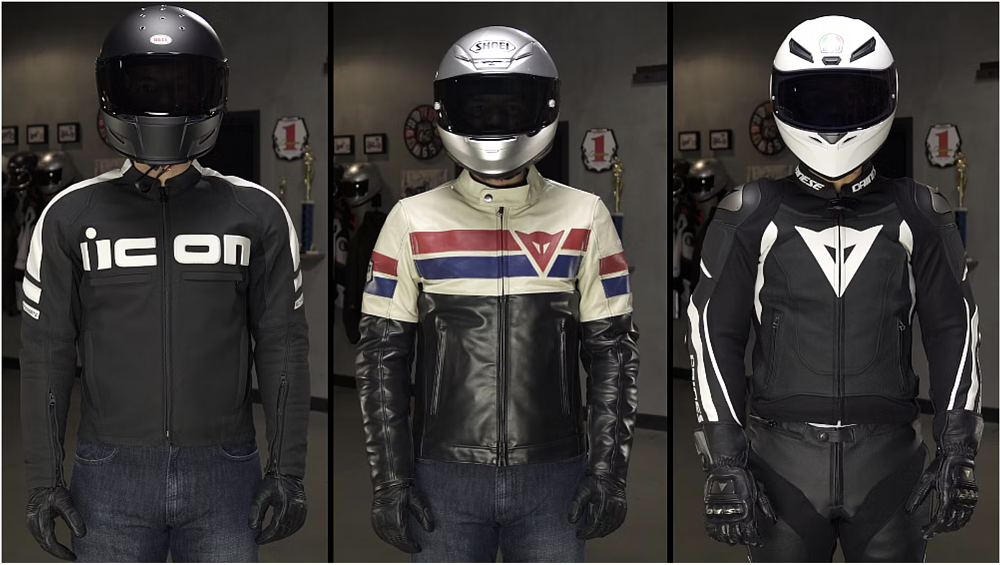
Good communication with your passenger is another key aspect of a successful two-up experience, so consider installing Bluetooth communicators so you can talk while riding. If that’s not an option, at least let your passenger know where you’re headed and how long it’s likely to take, agree on a few basic hand signals for communication, and verbally check in with them whenever you come to a stop.
Also, it’s a good idea to instruct them on how to get on the bike, i.e. from the left side and only once you’re on and have both feet planted on the ground. Let them know how to hold on, whether that’s around your waist, on your shoulders, or using the rear grab handles (whichever is more comfortable for them and you). It’s also important to warn them that any sudden movements, like shifting in the seat or turning to look behind you, affect the bike’s stability. I usually summarize it by suggesting they stay centered in the middle of the seat, remain relaxed, and look over my inside shoulder while cornering.
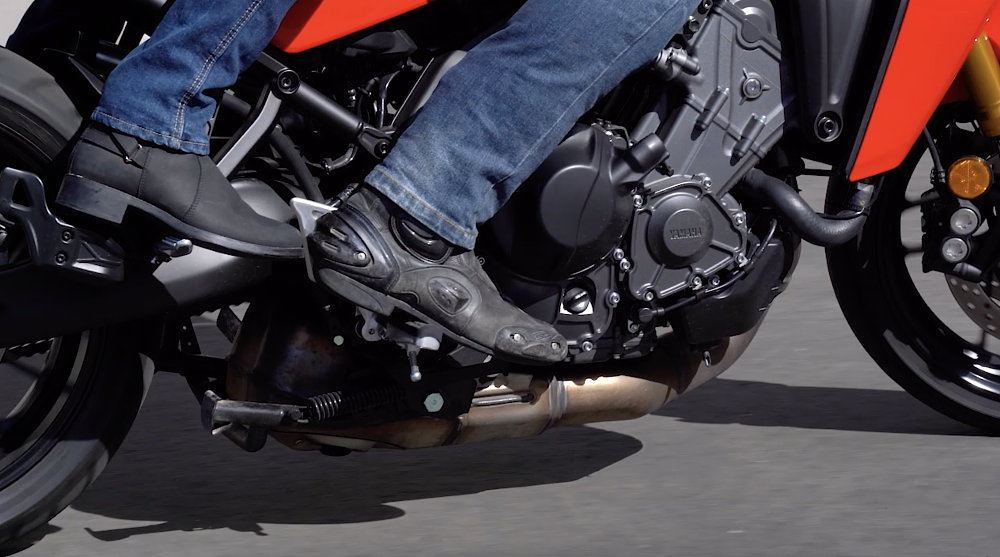
Your rear brake probably doesn’t get a lot of use while riding solo, but it’s a big help when someone’s on the back. The extra weight over the rear tire makes using the rear brake more effective, and it’s useful for trimming your speed without causing fork dive like you get when you apply the front brake. Lightly dragging the rear brake is also super helpful as a stabilizing technique while doing slow maneuvers like U-turns or parking. On the topic of brakes, keep in mind that any time you have more weight on the bike, your braking distances will be longer.
Then, there’s bike choice, which I know isn’t going to be an option for everyone. But if you do happen to have access to, say, a naked bike, sport touring bike or anything that’s got an upright riding position and is actually designed to carry a passenger, someone is going to be a lot more at ease on the back. Honestly, a scooter is a great option too, since they’re small and unintimidating. Sadly, if you’re ripping around on a sport bike with a postage stamp of a passenger seat, it’s pretty unlikely anyone will be comfortable or feel secure sitting on the tail of that thing.
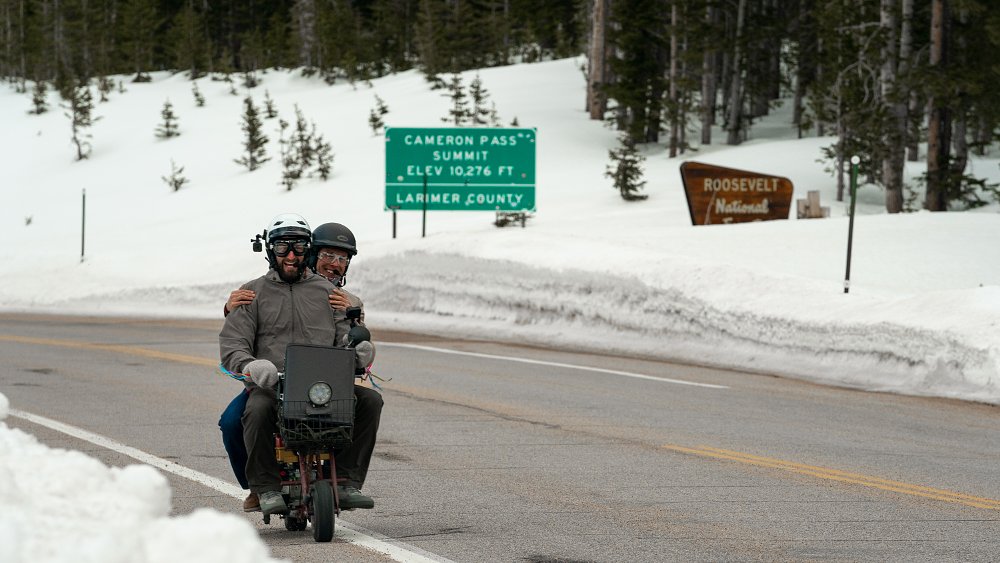
Whatever bike you end up using, aim to ride it as fluidly as possible. Being smooth is always important when riding, but it’s doubly so with a moveable mass on the back. If you’re abrupt with your throttle or brake inputs or sloppy with your shifting, that’s going to result in a tense passenger, bumped helmets, and probably not a request to go for another ride.
My modus operandi when riding two-up is to pretend it’s raining. That means being very cautious and controlled, and doing everything, like braking, accelerating, and turning, a little gentler and more carefully. This is mostly for the passenger’s benefit. We often think we need to ride fast and aggressively to impress the pillion, but it’s precarious being a passenger, and likely pretty thrilling even at a pace that seems boring to you as an experienced rider, so take it easy and go gently to ensure your partner actually enjoys the experience.
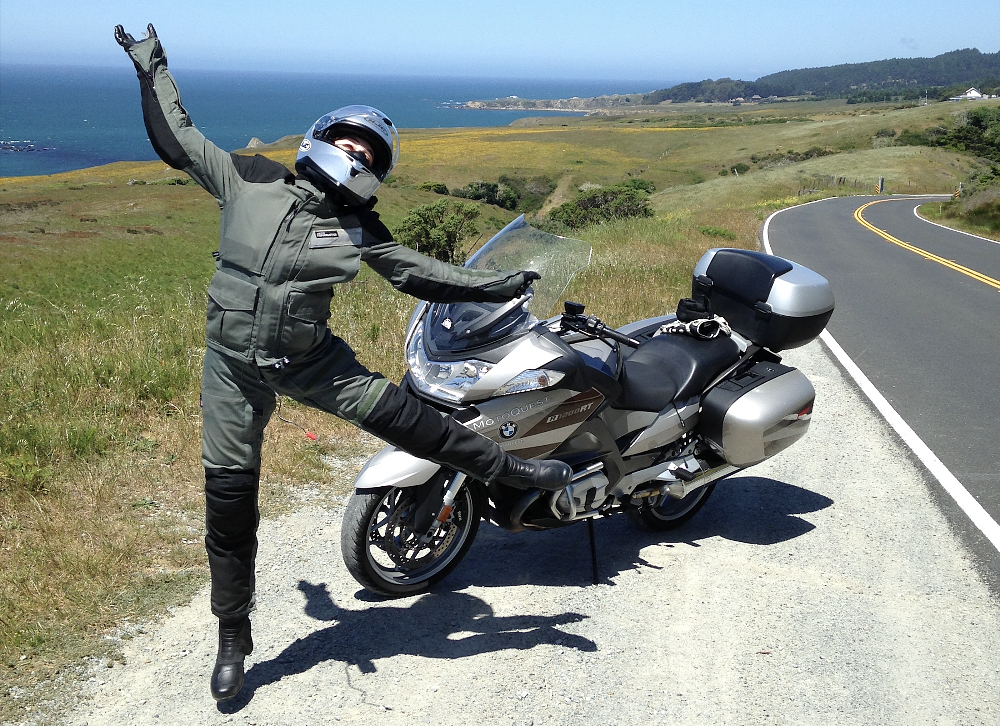
And my final suggestion is to put some thought into planning a good route. Taking a passenger along tree-lined streets or through beautiful landscapes or to a cool destination is going to make a much better impression than blasting down the highway or squeezing through traffic in the city. If you have the honor of introducing someone to riding on a motorcycle, it’s a big responsibility.
Make it a good ride.





